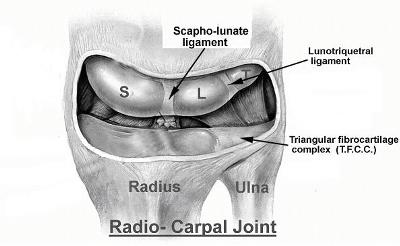General:
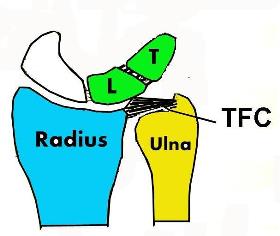
The Triangular Fibrocartilage (T.F.C.) is a strong ligament type structure in the wrist.
It acts to stabilise the joint between the Radius and Ulna.
It also acts as a spacer between the Ulna head and the wrist joint.
It may cause pain when torn or can result in clicking or catching in the wrist.
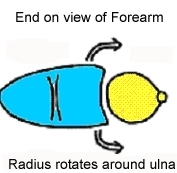
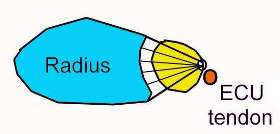
It has a poor blood supply and it derives its nutrition largely from the fluid in the wrist joint.
The edge of the TFC has a better blood supply ( Peripheral 10-15%).
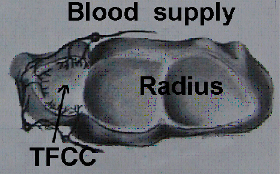
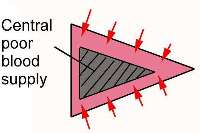
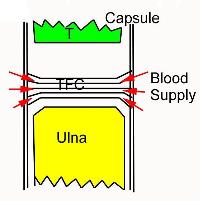
The lack of blood supply has implication for healing similar to the menisci in the knee. (“Cartilages in the knee”).
A central tear does not heal when torn but a peripheral tear may heal.
Many people have degenerative tears of the central portion of the TFC as they get older and yet may have no pain at all.
Ulna Length ( Ulna Variance)
On a front view of the wrist the radius and ulna are approximately the same length.
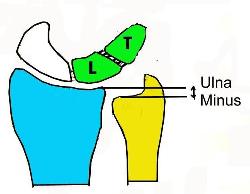
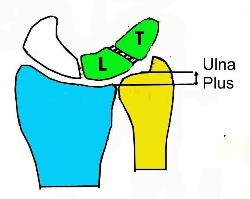
With normal gripping and leaning on the hand 80% of the force passes from the wrist bones to the radius & 20% to the ulna.
Minor changes in length of the ulna variance have profound implications for these forces.
Approx 2mm change in length has a 20% effect on the forces.
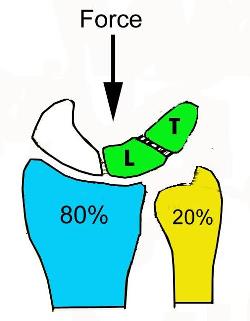
A long ulna can cause:
- Tear of the TFC
- Arthritis on the Lunate, Triquetrum
- Tear of the L-T ligament
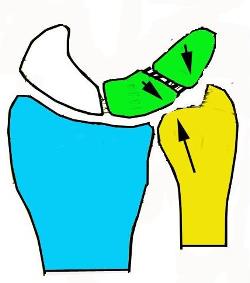
Issues:
- Central or Peripheral tear
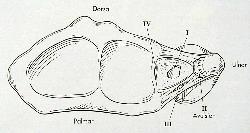
- Trauma or Degenerative
- Other injuries eg fracture, nerve, ligaments
- Age, Activity Level, General Health
- Non - Dominant Hand
- Risks v Benefits of Surgery
Treatment
1. Activity modification
2. Anti-inflammatory tablets
3. Cast
4. Splint
Surgery
1. Arthroscopy
a. Trim the torn cartilage
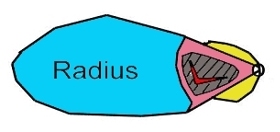
b. Repair
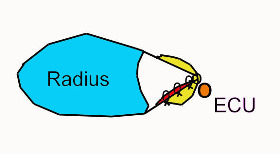
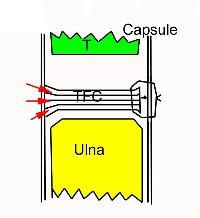
2. Arthroscopy & Ulna shortening
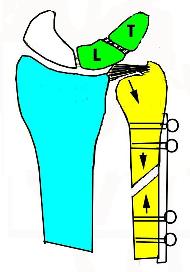
3. Plate removal – required in 2/3rds of cases although this figure has dramatically reduced with the use of low profile "Ulnar shortening" plates
Ulna shortening:
– if the ulna is too long
– the bone is cut using a saw and a plate is applied to the bone with 6 - 7 screws
– overnight stay in hospital
– plaster for 6 – 8 weeks or until bone cut has healed
– activity restriction for 3 + months
LAST UPDATED ON 12 / 4/ 2015

